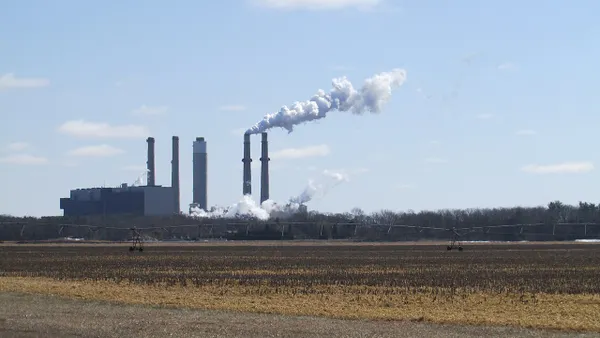Rinaldo Brutoco is founding president and CEO of the World Business Academy.
Reversing climate change is an existential imperative — slowing it down is no longer sufficient. Achieving this requires replacing fossil fuels with renewable energy across all sectors of the economy, particularly in hard-to-abate industries such as steel, cement and chemical production. These heavy industrial processes are among the most challenging areas to decarbonize and are projected to become the nation’s largest source of greenhouse gas emissions by 2035, making their transformation essential for a sustainable future.
The debate between “electrons” (electricity) and “molecules” (hydrogen) is central to this transformation. However, framing this as an either-or choice presents a false dichotomy. Both electrons and molecules are essential, each playing complementary roles in achieving decarbonization. While electricity is vital for many uses, hydrogen offers a more effective solution for hard-to-abate industries where electrification faces critical technological and economic limitations.
Steel production
Traditional steelmaking relies on blast furnaces fueled by coal. The coal is converted into coke to reach temperatures required to smelt iron ore into pig iron — the precursor to steel. This process generates enormous amounts of carbon dioxide and nitrous oxides, making it one of the most carbon-intensive industrial activities. Due to its exceptionally high combustion temperature, hydrogen eliminates the need for coal and coke. It reacts directly with iron ore to produce steel while emitting steam instead of CO2, drastically reducing greenhouse gas emissions.
Electric Arc Furnaces powered by electricity have been proposed as an alternative to steelmaking. However, EAFs are fundamentally limited to recycling scrap metal and cannot produce steel from raw iron ore. Furthermore, EAFs consume vast amounts of electricity, making them increasingly uneconomical as grid energy costs rise. In contrast, hydrogen’s cost steadily declines as renewable energy production scales up and hydrogen infrastructure expands. This makes hydrogen a more viable pathway for sustainable steel production.
The first “green steel” plant, HYBRIT® in Sweden, is now producing small batches of steel using hydrogen. A second plant, Stegra (formerly H2 Green Steel), is also under construction in Sweden and set to become Europe’s first greenfield steel mill in 50 years. The market response to these pioneering projects has been overwhelmingly positive. Major automakers like Daimler-Benz and BMW have pre-purchased substantial quantities of green steel, despite its premium price, as part of their sustainability commitments. Other consumer-facing industries are likely to follow. Recognizing that adopting green steel is essential for reducing CO2 in their supply chain and maintaining competitiveness in a decarbonizing global economy.
Cement production
Cement production is a notoriously hard-to-abate industrial process responsible for roughly 8% of global CO2 emissions The primary reason for this results from the process required to produce lime, the binding agent and a key component of cement, which involves heating limestone to 800°C (1472°F) in kilns. This process is doubly carbon-intensive, requiring vast amounts of energy to reach extreme temperatures and releasing CO2 as a byproduct of limestone’s chemical breakdown.
CEMEX, one of the world’s largest cement producers, has already adopted hydrogen as a cornerstone of its decarbonization strategy. Since 2019, CEMEX has implemented hydrogen injection across all its European plants and, in 2022, converted four of its Mexican factories to hydrogen. CEMEX describes hydrogen as a “low or zero-carbon primary source” in cement production, significantly reducing both energy emissions and process-related CO2.
In contrast, there are no comparable breakthroughs in electrifying cement production, nor are they likely to emerge. Electrifying cement kilns to achieve the required temperatures would demand excessive amounts of electricity, rendering the approach economically and practically unfeasible. Hydrogen, produced via renewable energy-powered electrolysis, is far more cost-effective, can be served through pipelines and stored onsite, and is better suited for the high temperatures needed in cement manufacturing.
Conclusion
To meet the urgency of the climate crisis, we must embrace a dual approach: electrify where possible and deploy hydrogen where electricity falls short. For steel and cement — the foundations of modern infrastructure and civilization — the future decisively belongs to hydrogen.






















